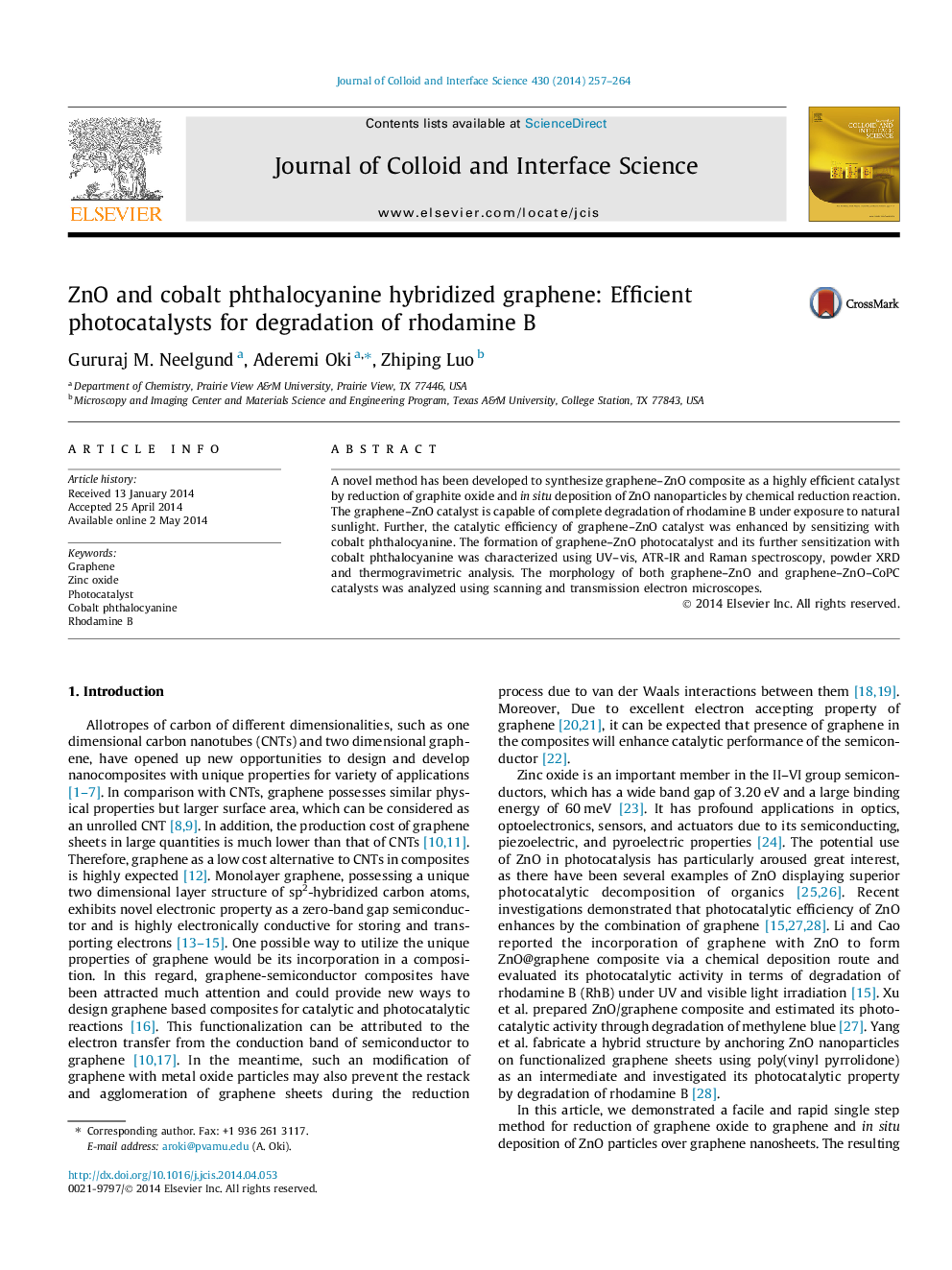| Article ID | Journal | Published Year | Pages | File Type |
|---|---|---|---|---|
| 607165 | Journal of Colloid and Interface Science | 2014 | 8 Pages |
•Development of novel method for synthesis of graphene–ZnO catalyst.•Prepared photocatalysts possessed great adsorptivity of rhodamine B.•Complete degradation of rhodamine B occured in presence of natural sunlight.•Sensitization of graphene–ZnO catalyst with CoPC has improved its photoresponsivity.
A novel method has been developed to synthesize graphene–ZnO composite as a highly efficient catalyst by reduction of graphite oxide and in situ deposition of ZnO nanoparticles by chemical reduction reaction. The graphene–ZnO catalyst is capable of complete degradation of rhodamine B under exposure to natural sunlight. Further, the catalytic efficiency of graphene–ZnO catalyst was enhanced by sensitizing with cobalt phthalocyanine. The formation of graphene–ZnO photocatalyst and its further sensitization with cobalt phthalocyanine was characterized using UV–vis, ATR-IR and Raman spectroscopy, powder XRD and thermogravimetric analysis. The morphology of both graphene–ZnO and graphene–ZnO–CoPC catalysts was analyzed using scanning and transmission electron microscopes.
Graphical abstractFigure optionsDownload full-size imageDownload high-quality image (165 K)Download as PowerPoint slide
